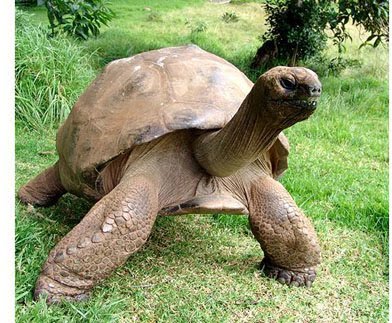

Five things that happen in one minute around the world:
56 airplanes will take off.
5,441,400 pounds (2468177.522 kilograms) of garbage are created.
243,000 pictures will be uploaded to Facebook.
7,150,000,000 human hearts beat 500,500,000,000 times.
858,282,240,000,000,000 new red blood cells are made.
Read more and watch a video http://bit.ly/1m3rv5r via The Atlantic
56 airplanes will take off.
5,441,400 pounds (2468177.522 kilograms) of garbage are created.
243,000 pictures will be uploaded to Facebook.
7,150,000,000 human hearts beat 500,500,000,000 times.
858,282,240,000,000,000 new red blood cells are made.
Read more and watch a video http://bit.ly/1m3rv5r via The Atlantic

It turns out, big cats love cologne. In fact, as Bec Crew explains in her latest blog, they're so fond of Calvin Klein's Obsession that the fragrance is now being used by researchers and zoo keepers to keep big cats entertained: "They roll and cheek-rub and just look to be in Heaven."
Read more: http://bit.ly/1gVpoM4


Read more: http://bit.ly/OQ26RW

These
beautiful birds are purple-crowned fairywrens. The picture was taken by
ornithologists (bird banders) studying the birds as part of population
monitoring in Australia. The way they are holding them is called
"photographer's grip" which gently secures the legs while keeping the
rest of the bird free. Handling time is generally very short.
Image and information via Frans de Waal - Public Page
Image and information via Frans de Waal - Public Page

A honest diagram of an atom, via Beatrice the Biologist

The last 32 generators of the controversial dam were switched on at the end of July last year, and the gushing water that resulted could generate about 22,500 megawatts of energy, and even slowed down the Earth's rotation. But there's no reason to panic, Earth's rotation changes frequently.
Read more: http://bit.ly/1m1Yo2n
Post and image via From Quarks to Quasars

Australian
astronomers have combined all observations of supernovae ever made to
determine that Newton's gravitational constant, G, has remained
unchanged over the last nine billion years. The research contradicts
suggestions that the attractive force between two objects has slowly
been changing since the Big Bang.
Read more: http://bit.ly/ON5kpg via Swinburne
Read more: http://bit.ly/ON5kpg via Swinburne

It sounds a little scary, but research has
revealed it's possible to speed up learning ability with the application
of a painless, mild electrical current to the brain. The scientists in
the US found that by applying a particular type of stimulation,
they could actually increase the brain response that helps you to learn
from mistakes. This resulted in test subjects being able to figure out a
task through trial and error more quickly. Interestingly, with a
different type of electric current the scientists could do the opposite
and make learners more cautious and slow to pick things up.
Read more: http://bit.ly/OMGSnZ via Vanderbilt University
Read more: http://bit.ly/OMGSnZ via Vanderbilt University

Estimates and calculations here: http://bit.ly/1lefKvV via Universe TodayEstimates and calculations here: http://bit.ly/1lefKvV via Universe Today

What would happen to your body if you stopped drinking water? Watch the latest AsapSCIENCE video to find out: http://bit.ly/1dn0yKt

Read more: http://bit.ly/1g6Xh12 via Scientific American

Scientists developed a method to generate stem cells from a single drop of blood. The method is user friendly and allows donors to collect their own samples and send them to the lab for further processing. The finding could lead to the development of large human induced pluripotent stem cell banks.
Read more: http://bit.ly/1ik74Ag via Medical Xpress

This tiny camera invented by scientists F. Levent Degertekin can provide high-definition 3D images of your arteries. The camera, which is the size of an uncooked quinoa grain, uses ultrasound imaging techniques to capture what going on inside the body. The images produced can be used in the surgical theatre, giving doctors a direct view of obstructions in a blood vessel.
Read more: http://wrd.cm/1eiLRpF via Wired

The Phillip Island Penguin Foundation has received so many donated jumpers for penguins rescued from oil spills, they can fill an entire shipping crate with them. See below for some of the best donations, modelled by some very lifelike fairy penguin toys. The Foundation has a 96% success rate of releasing healthy birds back in the wild.
Read more: http://bit.ly/1cXrIaz via the Guardian

Graphic by xkcd.com

Wilhelm Conrad Röentgen, a physics professor at the University of Wurburg in Germany, was experimenting with electric current flow in a partially evacuated glass tube in 1895 and one night he noticed a glow caused by an unknown radiation. He named the phenomenon x-radiation and few months later he took the first x-ray photograph of a body part: the bones in his wife’s hand – and one can even see her wedding band. The first even x-ray image was of a key.

No comments:
Post a Comment